I think Warner Brothers slipped one by Joseph Breen and the the rest of the censorship Nazis when they released Angels with Dirty Faces in 1938.
The Production Code was strict about pretty much everything including the idea that bad guys had to pay the price for their misdeeds. In fact, for a brief period after the code started being enforced you were hard pressed to find any gangster films even being made.
Angels, directed by Michael Curtiz, starred James Cagney as career criminal Rocky Sullivan who returns from a recent stint in jail to his old neighborhood. He looks up his childhood friend Jerry Connolly (it’s no accident that his initials were J C) who is now a priest. They renew their acquaintances and even their friendship. This despite the fact that they clearly represent good and evil and the padre at least is aware of it – in an appropriately humble way.
Rocky also looks up his most recent partner, a shyster lawyer, played by Humphrey Bogart, who's ostensibly holding on to Rocky's $100,000. Meanwhile Rocky encounters the grown-up version of a girl he used to tease, Laury Ferguson. Ferguson is brought to life by Ann Sheridan, upon whom I have a massive crush (albeit 70 years late). The two get along just fine as grown-ups.
Lastly, we have the Dead End Kids as the rambunctious teen age bad seeds of the neighborhood. Their brand of mischief-making recalls that of the youthful Rocky, meaning they slip onto the other side of the law. A key to the story – and the manner in which Angels With Dirty Faces beat the code – is the relationship Rocky develops with the gang.
Rocky becomes hero, mentor and role model to the lads. Father Sullivan's efforts to lead them on the right path have been for naught, with Rocky in the picture it is perhaps make or break time for these roughnecks.
While Rocky has gladly taken the boys under his wing he also has some very significant fish to fry. Bogart is part of a larger criminal enterprise and has no intention of parting with Rocky’s money. Indeed, these really bad guys (there are degrees of bad guys, especially in films of that era) want him rubbed out. Rocky’s way too smart for them though and not only stays alive but muscles in on the operation.
Our friend Rocky has a lot going on but like most any character played by Cagney, he’ll clear all hurdles with grace and charm. Herein lies the problem. Rocky is making fools of the police and thus the establishment and thus laws and thus morals and thus God. Father Connolly can’t have that for his parish, no matter that the principal perpetrator is his old pal.
With the cops impotent the padre joins forces with crusading reporters to expose the criminal element as personified by Rocky.
(From this point on we’re into serious spoiler territory so if you’ve not seen the movie proceed at your own risk.)
In large part due to Connolly’s agitation, Rocky and his reluctant partners engage in a gun battle and you can guess who wins that. The cops are drawn to the fracas and Rocky’s fate is sealed. It’s to prison, trial and the chair for him.
This was 1938 and bad guys couldn't win. But that wasn’t enough. After all, Rocky was still a hero to the young gang back home and frying in the chair wasn’t going to change that. All this is made clear by shots of the boys reading the latest news stories about Rocky.
The solution comes in the form of Father Connolly, who persuades Rocky to do the one thing he least wants to do: go out like a coward. If he faces death kicking and screaming he’ll no longer be such a hero to impressionable youngsters. A stoic Rocky is what the kids expect; only a rat shows fear. At the last second Rocky obliges. The boys read this and are disappointed in their one-time hero. The film ends with them going off with Father Connolly to pray for Rocky. Good triumphs over evil, game set and match.
Or does it?
Maybe the characters thought Rocky was a coward but audiences knew Rocky was putting on an act at the end. What a great guy to do that. Say, he must be all right! Plus Cagney’s Rocky was still the colorful character who led the exciting if abbreviated life. Father Connolly? A good guy, but come on, this was Pat O’Brien being oh so upright and moral. In other words, dull as dish soap.
Angels with Dirty Faces was clearly saying one thing and showing another. I doubt many career decisions have been based on seeing it but I’ve got to think it would be just as likely to lead one to a life of crime as to the priesthood.
The enforcement of the Production Code (not to mention the Code itself) sucked – to put it quite bluntly. But savvy filmmakers managed to work around it. While being sure to dot their i’s and cross their t’s, they’d still get away with a little immorality, sex, and unpunished crime.
What lunkheads like Breen missed was that the audiences who saw Angels with Dirty Faces were enthralled with Cagney, not the ultimate triumph of O’Brien. This was not the Cagney of White Heat (1948) rotten to the core. He was kind to all save double crossing gangsters who were far dirtier rats than he. True, Rocky’s tutelage of the young guns would have kept them on the path to evil but he lent them a touch of class. He refereed a basketball game for them and insisted they play by the rules (watching basketball from the 1930’s is, as they say, a hoot).
Cagney’s Rocky Sullivan was a multi dimensional character who audiences would root for. In the end he did the right thing. O’Brien’s priest was a true saint and truly yawn inducing. He automatically did the right thing. There was no choice involved. Me thinks Angels with Dirty Face slipped a fast one past the code all right.




.jpg)






No comments:
Post a Comment